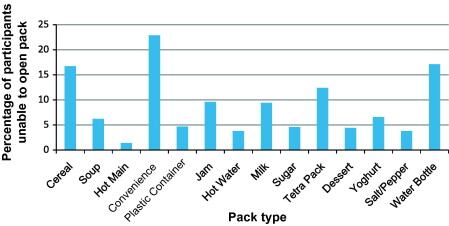An ever growing population of elderly people is currently seen as a major and relatively untapped market opportunity for the food and nutrition industry. Yet the high risk of malnutrition in elderly people is a growing global problem that needs to be tackled by both policy makers and the industry.
Whether at home, in hospital, or long term care, diet – and more importantly the packaging it comes in – has been identified by many as one of the key contributing factors to malnutrition among elderly.
Research conducted in Australia in 2007 showed that 51% of the elderly people covered by the metropolitan NSW Health Service had some degree of malnutrition. The report highlighted the difficulty experienced by some patients in opening food and beverage packaging – with a number of these patients indicating that they did not eat the food because they could not open it.
A recent research paper published in Appetite warned that manufacturers of food and drinks “must consider the end-user of the product” adding that ‘fiddly’ packaging (i.e. packaging that appears to require dexterity to access the contents) and decreased hand strength are shown to influence the ability of elderly people to open food and beverage packaging – so putting them at an increased risk of malnutrition.
Ageing population
Ever increasing life expectancy, coupled with lower birth rates have resulted in an ageing population in which more people than ever are over 65 – and estimates from the United Nations only see this growing in coming years.
In 2006 there were an estimated 486 million people aged over 65 years, however UN figures estimate this is to triple to more than 1.5 billion by 2050.
‘Fiddly’ packaging
The Australian team behind the Appetite paper warned that there are clear implications of this difficulty of opening food and beverage packaging impacting on the nutrition intake of the elderly.
“This study identified five forms of packaging that could not be opened by approximately 10% or more of those surveyed. The worst performing were, convenience dinners (23%), water bottles (17%), cereal (17%), tetra packs 12% and condiments (10%),” said the authors, led by Alison Bell from the University of Wollongong.

“The major issue with water bottles is a lack of strength, whilst with cereal packages it appears to be a combination of dexterity and strength,” they added.
“Given the serious nature of the problem for our nutritionally vulnerable, unwell elderly trying to access hospital foods and beverages, pressure can be applied to package designers to improve packaging accessibility by older people and people with disability, thus promoting wider health benefits.”
